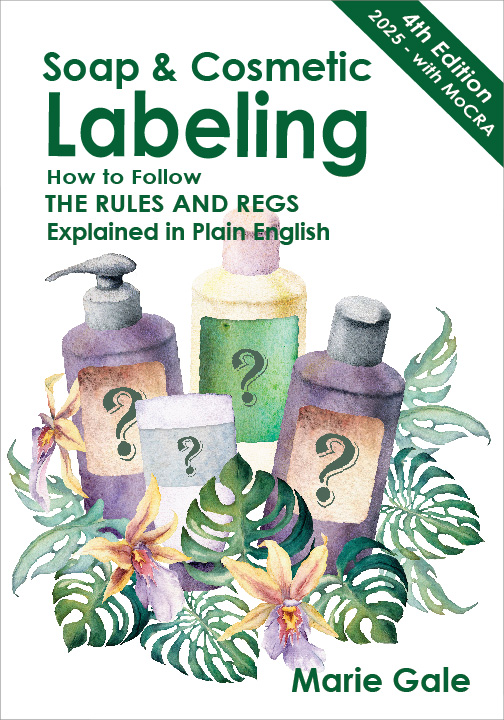When I do label reviews, one of the most common responses I get is, “Wait! What! This other company does it, why can’t I??” That’s often accompanied by pictures and screen shots of some other company’s products to prove the point. Yep—just because someone else is (wrongly) doing it, doesn’t mean that you can.
Bad examples of product labels abound. But just because they haven’t been caught doesn’t mean it’s a good idea.
Don’t Follow a Bad Example
Generally, it’s a bad idea to assume that some wording or design element is acceptable just because you’ve seen it on a product. There are plenty of companies out there that don’t know the rules and some that are intentionally doing it incorrectly. Even the big companies make mistakes sometimes!1
If you want your product labeling to be legal and stand the test of time, it’s ALWAYS best to check your copy and label content against the actual laws and regulations.
Borrowing from other product labels or descriptions of ingredients introduces so many ways you can go wrong! Here are just a few examples:
Net Contents on the Back or Side of Package
Sometimes you see the net contents on the back or sides instead of the front of a product for sale. Usually this is because the graphic designer didn’t like the way it looked having it on the front (and in bigger text than they would have liked).
REALITY: The net contents MUST be on the front of the package.
(See my post on Net Contents … Again)
Copying the Manufacturer’s Description of Ingredients
Many cosmetic ingredients are actually formulated to make changes to the body (to affect the function and structure). Essential oils and aromatherapy treatments are highly touted for what they can treat. Manufacturers often describe their ingredients in terms of the physical benefits they may impart. Some people directly quote that information as a way to sell their product.
REALITY: A manufacturer isn’t selling the ingredient to a CONSUMER. They can say what they want. You can’t use that information on a consumer cosmetic product. Making a claim that a product or ingredient will treat, cure, mitigate, or prevent disease or that it will alter the function or structure of the body makes the product an unapproved new drug.
(See my page on What is a DRUG?)
Using a Disclaimer to Get Around the Rules
Some companies have taken to using a “not evaluated by the FDA” and/or “not intended to diagnose, treat, cure, or prevent disease” disclaimer in an attempt to get around the rules. That disclaimer is specifically for nutritional supplements, and even then only in VERY specific circumstances. It doesn’t apply to cosmetics.
REALITY: A disclaimer won’t protect you if you are obviously violating the laws or regulations.
(See Using an “FDA Disclaimer” on Cosmetics)
Using Another Product’s Directions or Warnings
Food and nutritional supplements have some required warning statements (such as the warnings about peanut allergens, for example). Some hazardous substances also have required statements (such as when to see a doctor). There are actually only a few cosmetic products that have required or recommended warning statements that must be on the package. Handcrafted soap or cosmetic products need directions for SAFE use and pertinent information for the consumer.
REALITY: Don’t copy food, nutritional supplement, drug, or hazardous warnings willy-nilly onto your product. Use common sense in making sure you give YOUR customer the right and necessary information about YOUR product.
The Bottom Line
In the unliikely event that the FDA or a state inspector comes knocking on your door, “This other company was doing it,” won’t fly as an excuse.
The bottom line is that YOU are responsible for ensuring that YOUR packaging and labeling is in compliance with the laws and regulations. Get educated, find out what the rules and regulations are, and follow them. Make sure that your staff, graphic designers, label printers, and others on your packaging and labeling team do so as well.
You’ll probably sleep better knowing you have done all you can to give your business and your products a sound legal foundation.

Shameless plug!
To really be able to create your own labels that comply with the regulations, get my book from Amazon and use it.
4th Edition – Released March 5, 2025!!!
Or order directly from me (and get a signed copy)!
- See Warning Letters Address Drug Claims Made for Products Marketed as Cosmetics on the FDA website. ↩︎


Leave a Reply